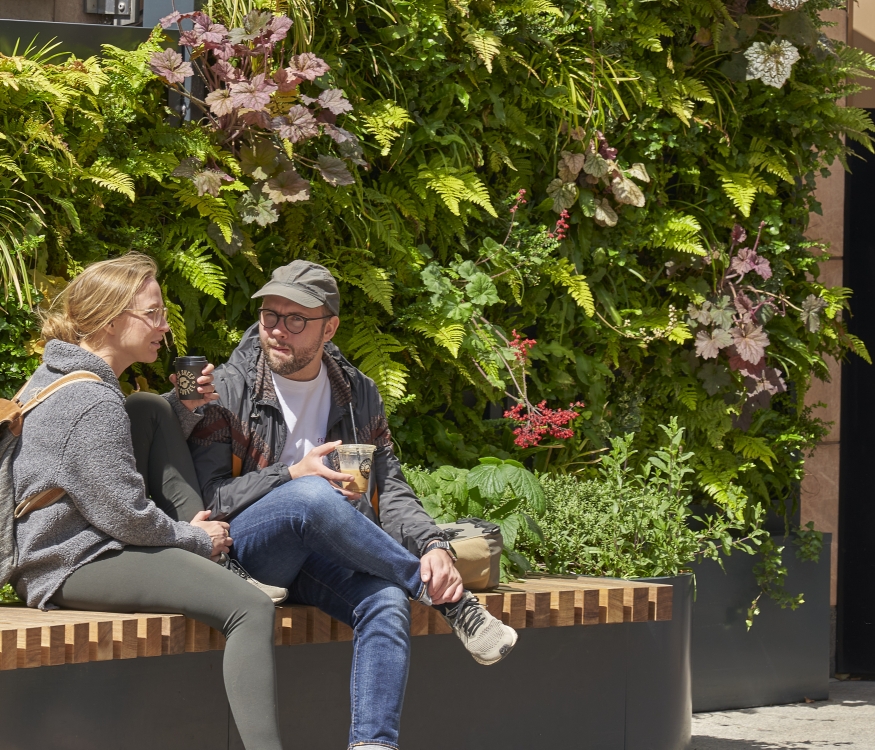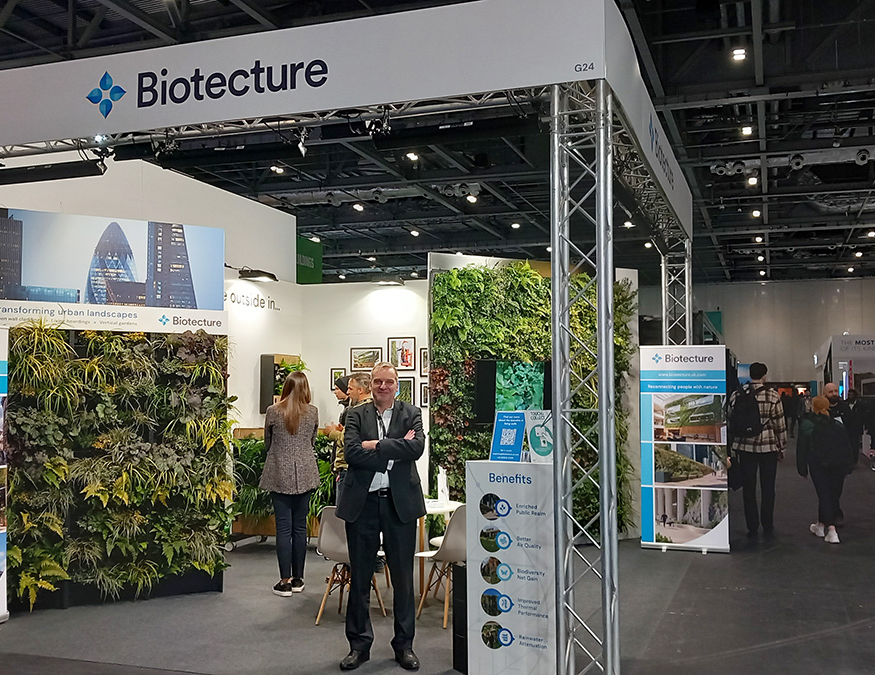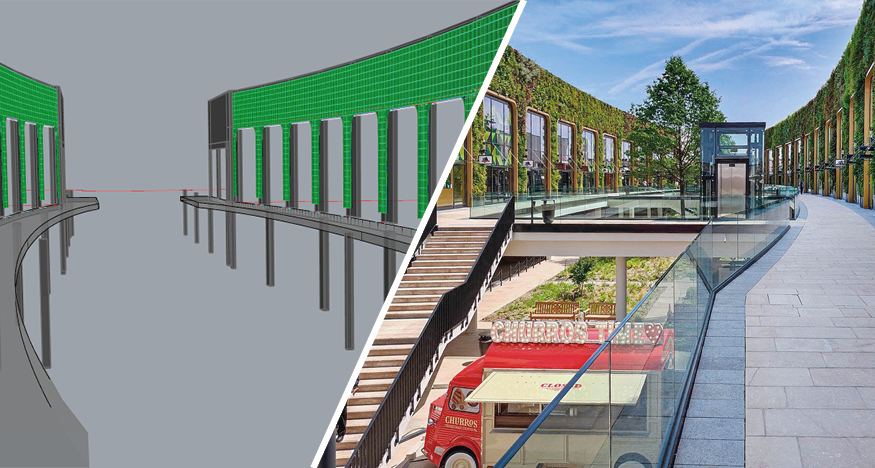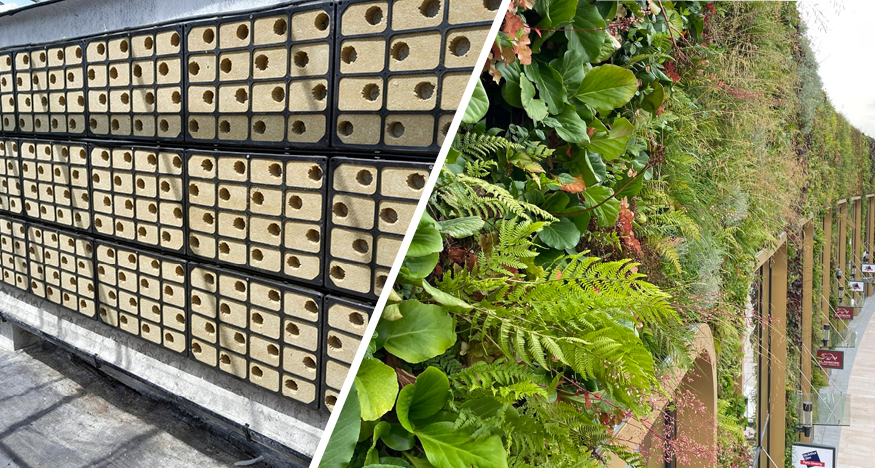As well as multiple other benefits, green walls have been proven to provide energy savings to help reduce the carbon footprint of existing buildings. Buildings directly account for 17% of UK Greenhouse Gas Emissions [1] and space heating accounts for over 60% of all energy used in buildings [2]. Living walls and green infrastructure provide insulation and solar shading helping to keep buildings cool in summer and warm in winter, which could play a part in helping the UK to achieve its net-zero commitments.
Reducing Heat Loss
Researchers at the University of Plymouth’s Sustainable Earth Institute recently carried out a study looking at the how living wall systems affect the thermal performance of buildings.
The research team installed a living wall on the outside of an uninsulated cavity walled building from the 1970s. After 5 weeks of measurements, they found that the amount of heat lost through the living wall section was 31.4% lower than the original structure. [3]
They also found that daytime temperatures within the section covered by a living wall remained more stable than the section behind the bare wall; meaning less energy was required to heat it.
Researchers in Reading also found a wall covered in vegetation lost 21-37% less heat than bare brick walls and that under extreme weather conditions such as strong wind and rain, energy efficiency was enhanced by 40-50% [4].
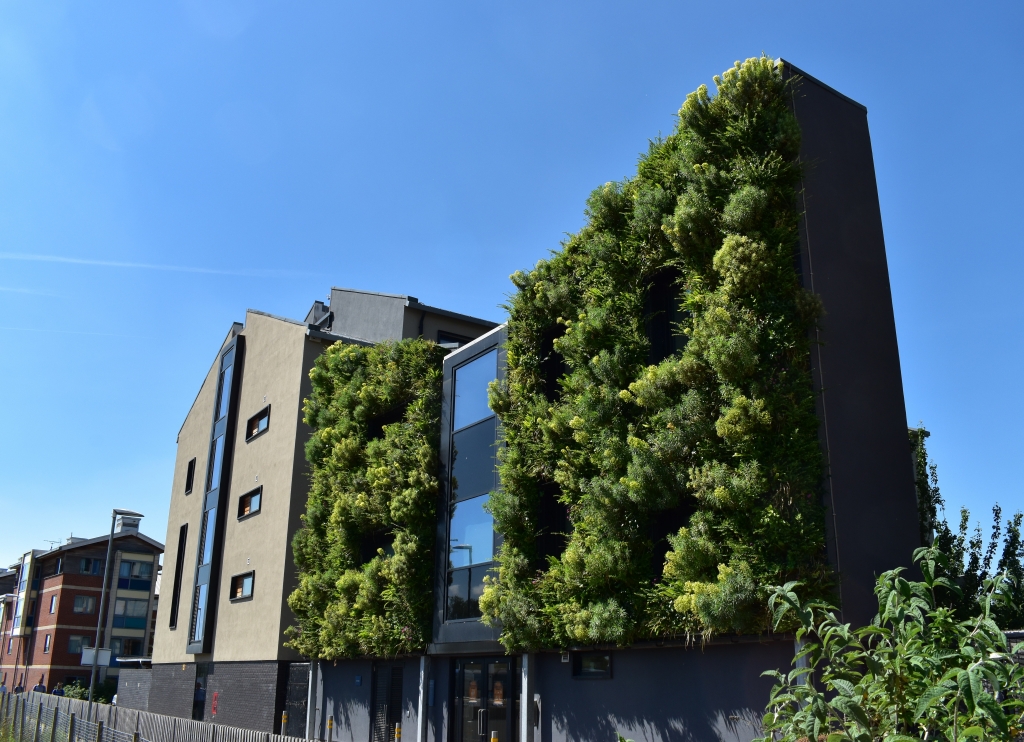
Living cladding installed at the University of Oxford’s Castle Mill Graduate Accommodation
Solar Shading
Reserachers at the University of Venice and the University of Siena found that screening from direct solar radiation by Green Walls is among the most important factors affecting the thermal performance of building envelopes. Foliage provides solar shading helping to keep buildings cool and reducing the need for mechanical cooling in summer.
The researchers found that in Mediterranean climates – green walls can be up to 20 degrees cooler than bare walls and can reduce energy demand for cooling of up to 66%. [3]
Relief from ‘urban heat islands’
As well as reducing the energy consumption of individual buildings, living walls and green infrastructure can also help keep our cities cooler in Summer. Climate change science predicts that London will have similar temperatures to those currently experienced in Marseilles by 2050. London, and other UK cities are not designed for these sustained levels of high temperatures. Heat can become trapped at street level allowing heat to accumulate.
Plants lower temperatures through evapotranspiration—the combination of water evaporated into the atmosphere and plant transpiration—during even the warmest part of the day. On a city wide scale the introduction of vegetation can have a dramatic effect on reducing the extremes of the urban heat island effect. The scale of green infrastructure will be directly proportional to the potential impact.
A simple way to demonstrate this is with an infrared camera as discovered by the Ecology Consultant Gary Grant when he visited one of our living walls in Southampton Row, Holborn, London.
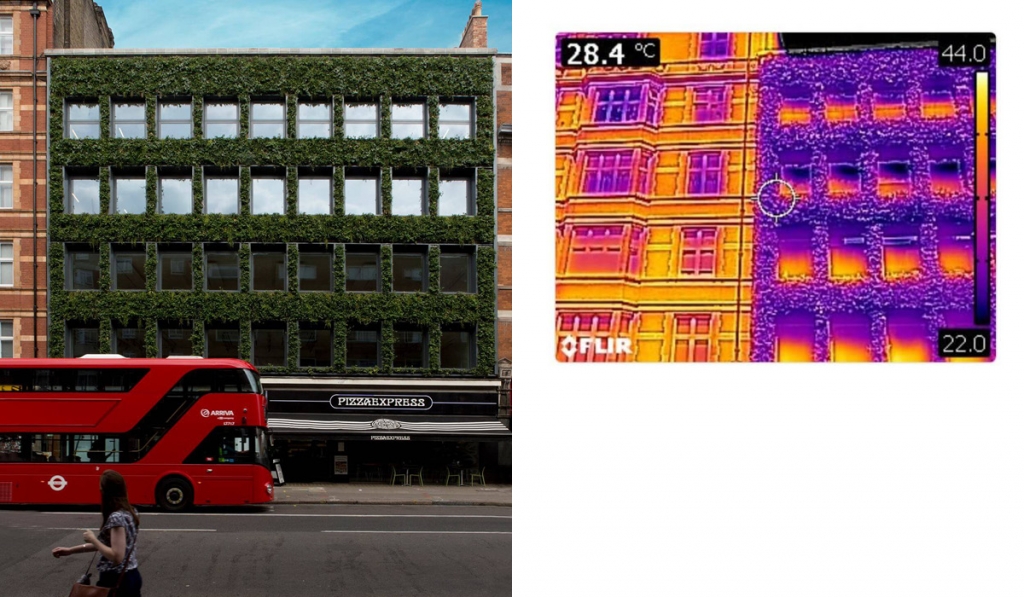
Thermal image of a building taken with an infrared camera by an Ecology consultant in June 2018 which shows the heat differential between the existing structure and that with one of our green walls attached. The wall is cooled by evapotranspiration and shade plus heat absorption by the canopy.
Biotecture’s living walls can be retrofitted to existing buildings or integrated into new builds. You can find out more about the benefits of living walls here.
[1] Change CoC (Ed.), London, UK: UK Government (2019)
[2] J. Palmer and I. Cooper, Department of Energy and Climate Change (DECC) (Ed.), Cambridge Architectural Research, Cambridge Econometrics and Eclipse, with Data provided by BRE (2011)
[3] M.Fox Morewood, T.Murphy, P.Lunt, S.Goodhew, 2021, ‘Living wall systems for improved performance of existing buildings’, Elsevier, Building and Environment 207 (2022) 108491
[4] R.W. Cameron, J. E. Taylor & M.R. Emmett, 2015, ‘A Hedera Green Facade- energy performance and saving under different maritime temperate weather conditions’, Elsevier, Building and Environment, Volume 92 (2015) 111-121
[5] Ugo Mazzali, Fabio Peron, Piercarlo Romagnoni, Riccardo M. Pulselli, Simone Bastianoni, 2013 ‘Experimental investigation on the energy performance of Living Walls in a temperate climate’, Elsevier, Building and Environment, 64 (2013) 57-66

